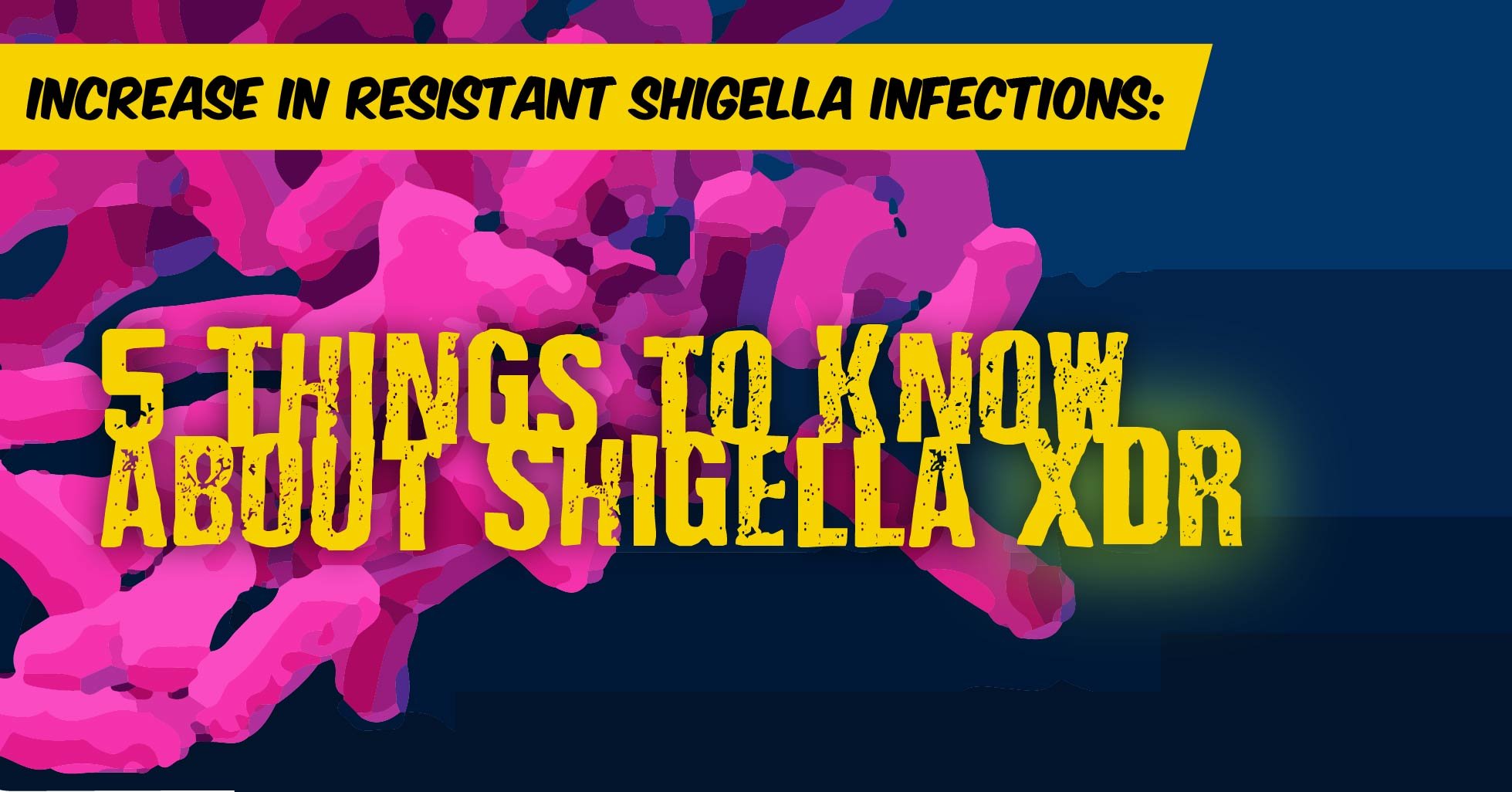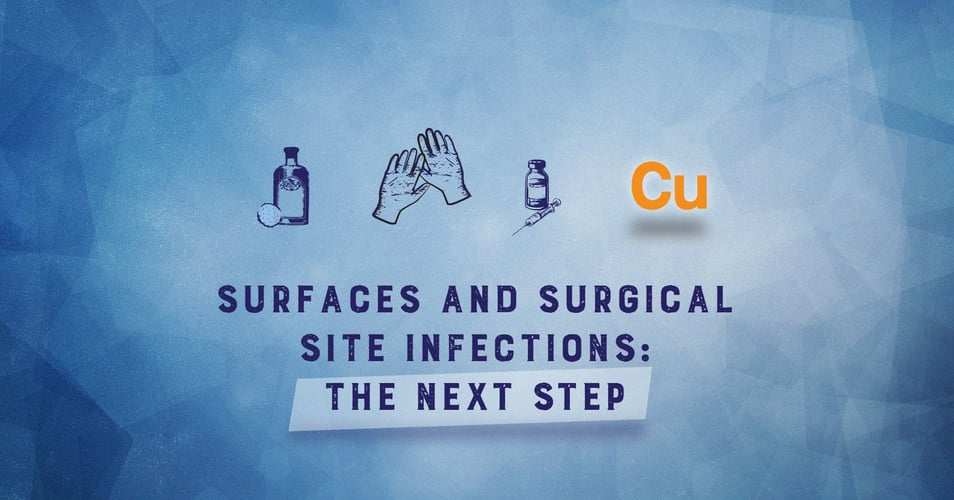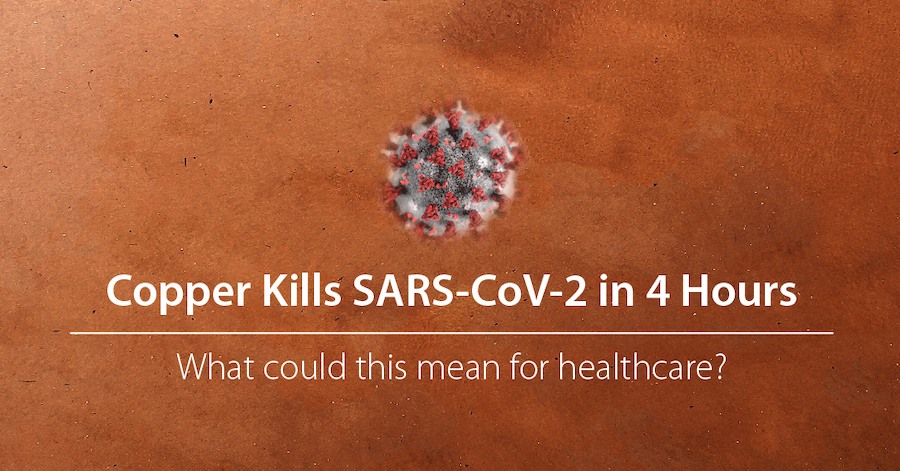Increase in Resistant Shigella Infections: 5 Things to Know about Shigella XDR

 A recent Centers for Disease Control and Prevention (CDC) Health Advisory addresses an increase in "extensively-drug-resistant" (XDR) Shigella, the strain that caused 5% of cases of shigellosis in 2022, up from 0% in 2015. Antibiotic resistance has been a top priority for years with national and world health organizations, so what sets this particular strain apart? In today's post, we will cover the 5 things you need to know about this strain of Shigella.
A recent Centers for Disease Control and Prevention (CDC) Health Advisory addresses an increase in "extensively-drug-resistant" (XDR) Shigella, the strain that caused 5% of cases of shigellosis in 2022, up from 0% in 2015. Antibiotic resistance has been a top priority for years with national and world health organizations, so what sets this particular strain apart? In today's post, we will cover the 5 things you need to know about this strain of Shigella.
#1 Shigellosis is a common bacterial infection that causes inflammatory diarrhea; XDR Shigella is just one strain that a person can contract. In the United States alone, about 450,000 cases are reported each year, and because most are caused by strains that respond to antibiotics, most of these cases resolve without treatment within 5-7 days. In these cases, our natural immune system is enough to kill the bacteria. However, as with any infection, individuals who are immunocompromised, elderly, or very young may have a harder time killing the bacteria and will require antibiotics. Anyone who contracts XDR Shigella is at higher risk, but vulnerable populations are particularly at risk, since the antibiotics will be of no help to them, leaving them to fight off the bacteria with their weakened immune system alone.
|
Why is XDR Shigella so resistant? Each type of antibiotic is designed to take advantage of a particular weakness in bacteria's defenses. Some antibiotics take advantage of cell membrane permeability, while others work by evading bacterial pumps. Most of the time, whatever bacterial infection you have is weak enough that one of the first-line treatments wipes it out. Some bacteria can evade a few of these first-line drugs, so "broad-spectrum" drugs are required. XDR Shigella? It can avoid them all. That means that regardless of the antibiotic used, XDR Shigella is not affected. This means it is up to your body's immune system to fight it off on its own. |
#2 Shigellosis has a notoriously low infectious dose - as few as 10-100 organisms can lead to an infection. It is spread through the "fecal-oral route," that is, from unwashed hands or contaminated water or food. The organisms are already fairly resistant to stomach acids that destroy other organisms, so once in the small intestine, Shigella can reproduce and reach the colon, where it begins to produce toxins. It is these toxins that cause the symptoms of shigellosis: inflammation, fever, vomiting, and watery, bloody diarrhea.
#3 Regular Shigellosis is not a big deal; XDR Shigellosis is extremely dangerous because it cannot be killed by antibiotics. Infected individuals typically recover from regular shigellosis with rest and fluids, with antibiotics only needed if there is fear of an outbreak or the patient has a weak immune system. XDR Shigella is resistant to all empiric and alternative antibiotics, including azithromycin, ciprofloxacin, ceftriaxone, trimethoprim-sulfamethoxazole (TMP-SMX), and ampicillin. The CDC currently has no recommendations for treatment.
#4 XDR Shigella can transfer resistance to other enteric bacteria. The strains currently being reported in the United States do not carry resistance mechanisms for fosfomycin or carbapanems, but they can transmit their resistance genes to neighboring bacteria for other antibiotics through horizontal gene transfer.
#5 You can avoid contracting (or transmitting) Shigella by following these steps.
- Wash your hands with soap and water after using the restroom, changing a diaper, or cleaning a bathroom area.
- Avoid swallowing water from ponds, lakes, swimming pools, bathtubs, and any body of water where people immerse their entire bodies.
- Follow safe food and water habits when travelling and wash hands often.
- Avoid intimate contact with partners exhibiting symptoms, and follow safe sex practices.
- If you have diarrhea, do no serve food or drinks, stay out of recreational water, and follow safe sex practices.
If you are in a high-risk group, go to your doctor if you have symptoms of shigellosis. High risk-groups can be found here.
We hope this quick overview has helped you put the recent headlines into context. As always, it is better to be informed, even if the information is scary! Knowledge is power, and in this case, just might be the only defense against XDR Shigella.
![EOScu Logo - Dark - Outlined [07182023]-01](https://blog.eoscu.com/hubfs/Eoscu_June2024/Images/EOScu%20Logo%20-%20Dark%20-%20Outlined%20%5B07182023%5D-01.svg)




